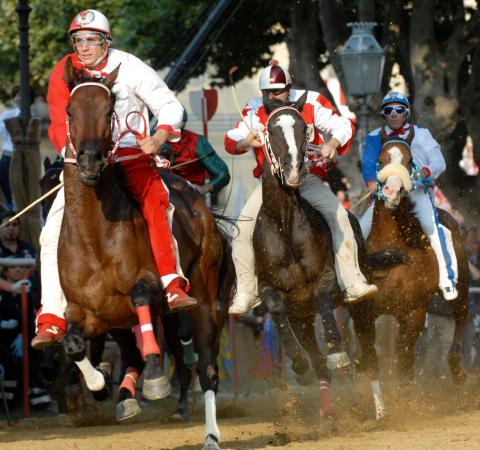The citizens of Asti have always struggled with perseverance to maintain the privilege of running the Palio in the day of their patron saint's day, dedicated to the local martyr San Secondo. The race is in fact cited in all treaties, all alliances and in every chapter of the agreements with the various regents, masters or rulers.
The first certain news of the race dates back to 1275: the local historian William Ventura reports that Asti, "sicut fieri solet Ast, in festo Beati Secundi" ( "as is customary in Asti, during the feast of Blessed Second"), ran the Palio as an act of derision under the walls of the enemy city of Alba, devastating the surrounding vineyards.
Therefore, if as early as 1275 the "Race of the Palio" was defined as a habit, it is likely that its origin must be shortly after the year 1000, with codified rules since the thirteenth century (the period also coincides with the heyday of the City of Asti).
During this period and until the first half of the fourteenth century, the race was held as "round", in a circular path roughly corresponding to the area of the existing squares Alfieri and Liberty, which already already in the Lombard and Carolingian period was called "curriculum."
Gian Galeazzo Visconti, father of Valentina Visconti, who became lord of Asti in 1382, built a new fortified citadel right at the curriculum, in order to strengthen the coty's defenses.
This implied the displacement of the race, which was no longer held in a round, but on a linear path (that is, "the long run") of about two and a half kilometers along the main street of the city (today's Corso Alfieri). Only recently it was chosen to run on a triangular track created in the central Piazza Alfieri.
en



